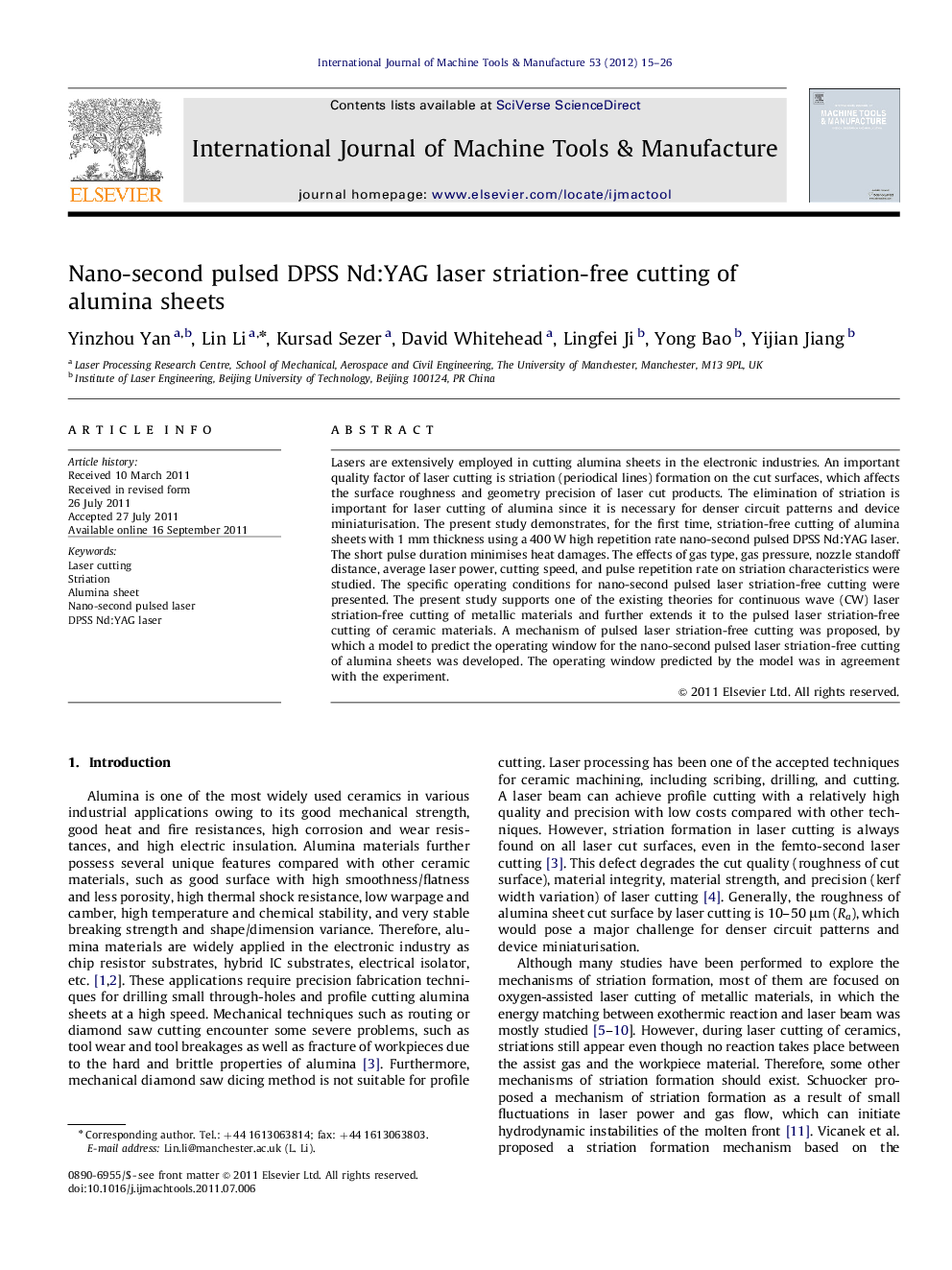| Article ID | Journal | Published Year | Pages | File Type |
|---|---|---|---|---|
| 781858 | International Journal of Machine Tools and Manufacture | 2012 | 12 Pages |
Lasers are extensively employed in cutting alumina sheets in the electronic industries. An important quality factor of laser cutting is striation (periodical lines) formation on the cut surfaces, which affects the surface roughness and geometry precision of laser cut products. The elimination of striation is important for laser cutting of alumina since it is necessary for denser circuit patterns and device miniaturisation. The present study demonstrates, for the first time, striation-free cutting of alumina sheets with 1 mm thickness using a 400 W high repetition rate nano-second pulsed DPSS Nd:YAG laser. The short pulse duration minimises heat damages. The effects of gas type, gas pressure, nozzle standoff distance, average laser power, cutting speed, and pulse repetition rate on striation characteristics were studied. The specific operating conditions for nano-second pulsed laser striation-free cutting were presented. The present study supports one of the existing theories for continuous wave (CW) laser striation-free cutting of metallic materials and further extends it to the pulsed laser striation-free cutting of ceramic materials. A mechanism of pulsed laser striation-free cutting was proposed, by which a model to predict the operating window for the nano-second pulsed laser striation-free cutting of alumina sheets was developed. The operating window predicted by the model was in agreement with the experiment.
► Striation-free cutting of alumina sheets is demonstrated using a ns-pulsed laser. ► We reveal the effects of the major process parameters on striation formation. ► We present a mechanism of ns-pulsed laser striation-free cutting of alumina sheets. ► We develop a parameter model for ns-pulsed laser striation-free cutting. ► Operating conditions should be carefully selected for striation-free cutting.
